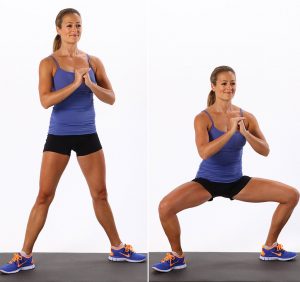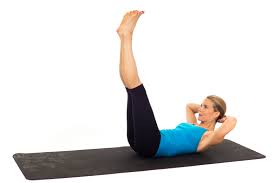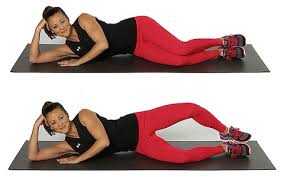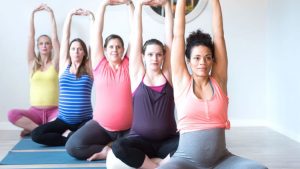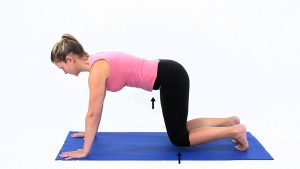Experts agree that healthy, pregnant women should keep moving. Exercises can help reduce back and hip pain and prepare the body for delivery. Staying fit during pregnancy also helps mothers return to their prenatal body shape easier. Here are easy to do exercises that aim to work on problem areas and reduce discomfort during pregnancy.
Plié Squats
Safe during the second and third trimester, a plié squat is helpful if you aim to have a natural birth. It can strengthen the hip muscles, quadriceps, and hamstrings. It also improves balance and opens up the pelvis, making labor and delivery easier.
To start, stand firm or use a chair or table for support. Position feet wider than your hips. Bend legs forward but not farther than your toes. Do squats by dropping down and then standing up again. Make sure your shoulders are firmly straightened, but as you come down, do not push out your buttocks area. You can do this in three sets of fifteen every other day.
Leg Lifts
This exercise tones thigh muscles, which is good because thighs are a problem area during pregnancy.
Lie down on your side. Take the bottom leg out ninety degrees from the body. Take your top hand in front of you and the bottom hand as support for your head. Start lifting the top leg up and back down.
Do this in three sets of fifteen if you can, and repeat this on the other side of your body.
Clam Exercise
This prenatal exercise builds glute strength and strengthens hips.
Lie on your side, with the bottom arm supporting your head up. You can use a pillow to support your tummy area. Take your heels together; you can place the top hand up or in front of you on the floor. Start with your knees together, then slowly open the knee up and back down. Keep going, and make sure the back of your body is nice and strong.
Aim for three sets of fifteen, or stop when you feel discomfort.
Hip Circles
Hip circles are also helpful for pregnant women to prepare well during delivery for it strengthens hips and glutes.
Lie on your side with the bottom leg bent and the top leg straight. Raise your leg, and draw circles with your heel, feeling the muscle working on your bottom and at the side of your hip. Keep your pelvis in lower back steady as you move your leg.
Pregnancy Yoga
This particular yoga pose eases hip and lower back pains, but this is not suitable if you have issues in your sacroiliac.
Sit and take the left leg back and the right leg in front, making sure the right foot rests on your left thigh. Place hands on your hips, and let the left toe point back. Move hips forward, inhale, lift your chest, then move your weight toward the back. Repeat slowly. Change side.
Take time to do this by stretching both legs forward and shaking. Repeat the pose.
Pelvic Tilt
Pelvic tilts help improve posture, strengthen abs, and reduce back pain. Begin by standing against a wall with your spine just relaxed. Inhale while pressing your back against the wall, then exhale. Repeat as many times as you can.
Try a variation by rocking your pelvic area back and forth. Make sure your back is straight. You can also do this kneeling on all fours. Do this regularly to prepare for your labor.
Pregnancy Pilates
This workout can help pregnant moms stay fit during pregnancy.
Begin by standing with feet wide apart. Keep your back straight, and avoid leaning backward or forward. Spread both arms straight sideward while slowly bending your knees down as low as you can, and lift back up again.
Repeat the process and keep your balance. You can feel it working on your thighs.
Ensure a Healthy Pregnancy
Exercising even when pregnant offers numerous benefits. Aside from its physical benefits, it also improves your mood and helps you have a positive body image. It is also smart for pregnant women with shortness of breath to get a pulse oximetry sensor like nonin, which can monitor symptoms of cardiac or respiratory distress during exercise.
Medical considerations aside, moderate exercise is generally advantageous. It helps expecting mothers control weight, manage moods and feel better, not to mention, exercise aids in quick postpartum recovery. It is best to start slow, do warm-ups, and listen to your body.

